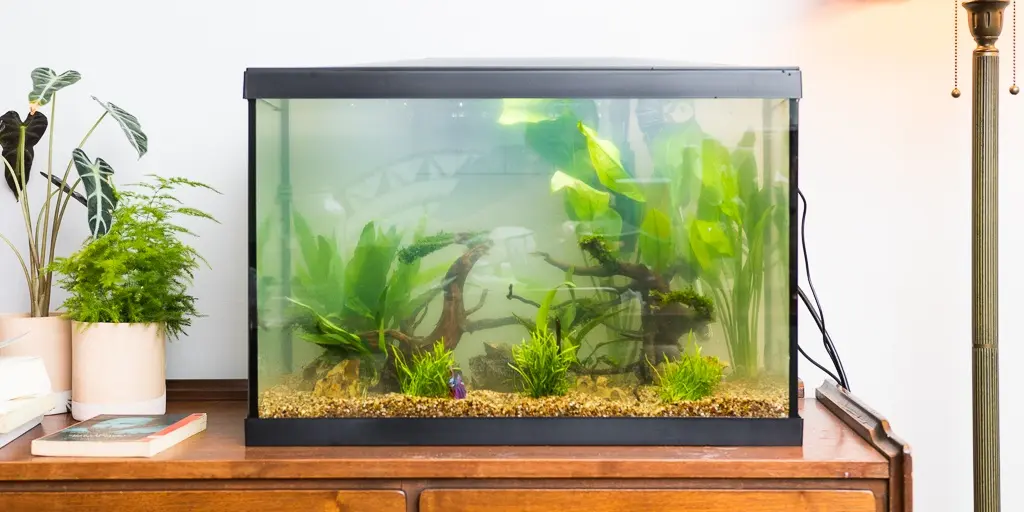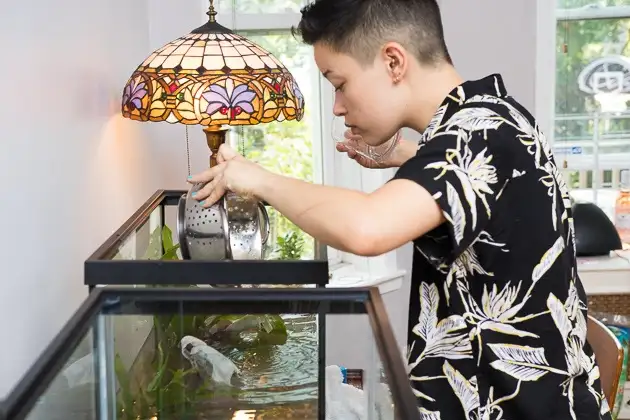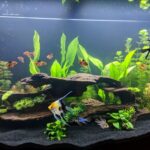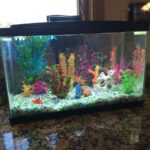Have you ever walked into a room and been instantly drawn to the calm movement of colorful fish gliding through crystal-clear water? That’s the quiet magic an aquarium fish tank for home can bring.
Aquariums do more than just beautify a space—they create a peaceful environment, spark joy, and provide a rewarding hobby that brings both learning and relaxation. But with so many options out there, where do you even begin?
In this complete guide, we’ll walk you through everything you need to know about choosing, setting up, and maintaining an aquarium fish tank for your home. Whether you live in a small apartment or a spacious house, there’s a perfect fish tank waiting for you.
Table of Contents
Why You Should Have an Aquarium Fish Tank at Home
Before we dive into types and setups, let’s take a moment to talk about why having an aquarium at home is such a good idea.
1. Stress Relief
Numerous studies show that watching fish reduces anxiety, lowers heart rate, and creates a sense of calm.
2. Decorative Appeal
Aquariums add a living, moving element to any space—serving as a centerpiece or even a subtle background feature.
3. Educational for Kids and Adults
Fish tanks offer daily lessons in biology, ecosystems, water chemistry, and responsibility.
4. Customizable for Any Space
Whether you have a corner to fill or a wall to decorate, there’s a tank that fits.
Choosing the Right Aquarium Fish Tank for Home
Getting the right tank depends on a few key factors—space, budget, experience, and style. Let’s explore the main types of tanks and who they’re best for.
1. Standard Glass or Acrylic Tank
- Available in all sizes
- Simple, clear design
- Ideal for beginners
Pros: Easy to find, affordable, and fits any room
Cons: Requires a stand or solid surface
2. Corner Aquarium
- Fits snugly into corners
- Great for small spaces
- Unique panoramic view
Best for: Apartments, bedrooms, or offices
3. Wall-Mounted or In-Wall Tank
- Built into or mounted on the wall
- High-end, modern look
Best for: Homeowners looking for a sleek aesthetic
Note: Usually requires professional installation

4. Nano or Desktop Tanks
- Compact tanks under 10 gallons
- Ideal for desktops or shelves
Great for: Bettas, shrimp, or one small fish
Caution: Smaller tanks are more sensitive to changes in temperature or water quality
5. Custom-Built Tanks
- Tailored to your space and design preferences
Perfect for: Large homes, luxury designs, or unique placements
Best Locations for an Aquarium Fish Tank at Home
Placement plays a major role in the health of your fish and the overall appearance of the tank.
Do:
- Place near a power outlet
- Ensure it’s on a flat, stable surface
- Keep away from direct sunlight (prevents algae growth)
- Choose a visible spot where you can enjoy it daily
Don’t:
- Place next to windows or heaters
- Put it in high-traffic areas where it can get bumped
- Install on unstable or unlevel furniture
What Size Aquarium Should You Get?
Size affects everything: how many fish you can keep, how stable the water stays, and how easy the tank is to maintain.
| Tank Size | Ideal For | Notes |
|---|---|---|
| 5–10 gallons | Beginners, Betta tanks | Easy to manage, good for one fish |
| 20–30 gallons | Community tanks | More stable, allows small groups of fish |
| 40+ gallons | Advanced setups | Requires more space and support |
| 75+ gallons | Saltwater or showpiece tanks | Ideal for experienced aquarists |
Tip: Bigger is often better. Larger tanks are easier to maintain because they offer more stable conditions.
Equipment You’ll Need
An aquarium fish tank for home isn’t just a glass box with water. It needs the right equipment to function smoothly.
Basic Essentials:
- Filter: Keeps water clean and oxygenated
- Heater (for tropical fish): Maintains stable water temperature
- Lighting: Supports fish health and plant growth
- Gravel or Substrate: Adds visual appeal and anchors decorations
- Thermometer: Lets you monitor temperature daily
- Water Conditioner: Removes chlorine from tap water
Optional but useful:
- Air pump and air stone
- Automatic feeder
- Background poster
- Aquarium test kit
Setting Up Your Aquarium Fish Tank for Home
Setting up an aquarium is exciting but requires patience. Follow these steps to start right:
Step 1: Rinse Everything
Always rinse your gravel, decorations, and tank with plain water (no soap).
Step 2: Add Substrate and Decorations
Layer your gravel first, then add decorations like rocks, driftwood, and artificial or live plants.
Step 3: Install Equipment
Position your filter, heater, and thermometer, but don’t plug them in yet.
Step 4: Fill with Water
Use room-temperature water. Add a dechlorinator before turning on your equipment.
Step 5: Cycle the Tank
Let the tank run for at least 1-2 weeks to establish beneficial bacteria before adding fish.
Best Fish for a Home Aquarium
Choose fish that match your tank size and maintenance preference.
For Small Tanks (5–10 gallons):
- Betta fish
- Guppies
- Shrimp
- Neon tetras
For Medium Tanks (20–40 gallons):
- Mollies
- Platies
- Cory catfish
- Zebra danios
For Large Tanks (50+ gallons):
- Angelfish
- Gouramis
- Rainbowfish
- Clown loaches
Avoid mixing aggressive and peaceful species. Always research compatibility before stocking.
Decoration Ideas to Personalize Your Tank
Your aquarium fish tank for home should match your personal style.
Nature-Inspired:
- Driftwood
- River rocks
- Live plants
Themed:
- Pirate shipwreck
- Castle ruins
- Space or fantasy decor
Minimalist:
- White sand
- Bonsai driftwood
- Simple background
Tip: Always use aquarium-safe materials. Avoid painted items or anything with sharp edges.
Routine Maintenance Tips
A clean tank is a healthy tank. Here’s what you should do:
Daily:
- Check fish behavior
- Monitor temperature
- Remove uneaten food
Weekly:
- Change 10–20% of the water
- Test pH and ammonia levels
- Clean glass with an algae scraper
Monthly:
- Rinse filter media in tank water
- Deep-clean decorations
- Check equipment for wear
Common Mistakes to Avoid
Even seasoned fishkeepers make these errors:
- Skipping the cycling process
- Overfeeding (causes cloudy water and ammonia spikes)
- Overstocking (more fish = more waste)
- Inconsistent maintenance
- Using tap water without conditioner
By avoiding these mistakes, you’ll give your fish a healthier, happier home.
Final Thoughts: A Beautiful Aquarium Starts with the Right Choices
Setting up an aquarium fish tank for home is a journey that combines creativity, care, and curiosity. Whether you’re looking for a small desk companion or a grand aquatic centerpiece, the right setup can bring tranquility and joy into your space.
Remember:
- Pick the right size and type for your needs
- Place it where it’s both safe and visible
- Cycle before adding fish
- Keep it clean and consistent
Once your tank is up and running, you’ll not only be watching fish—you’ll be watching your own little world come to life.



